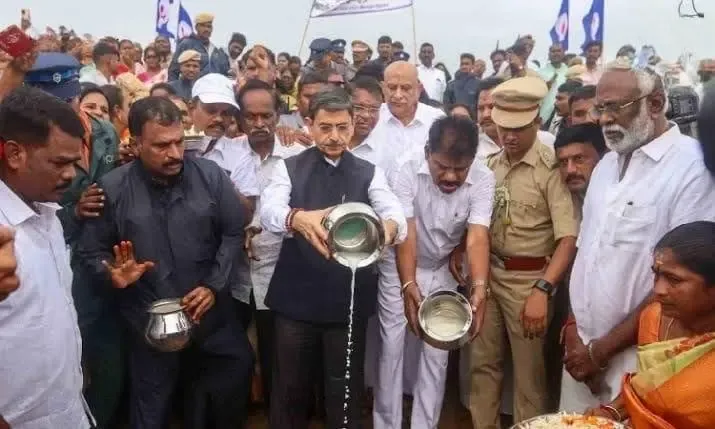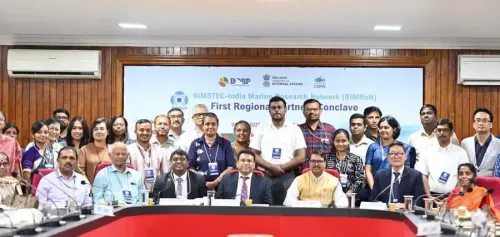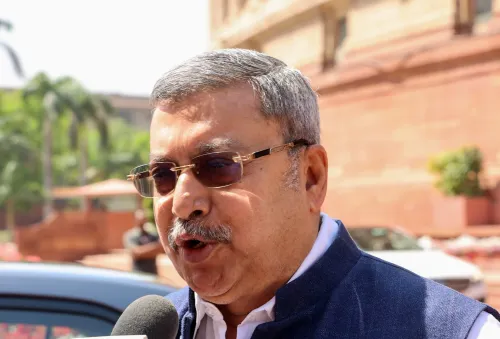Tamil Nadu's Governor and Fishermen Commemorate 20 Years Since Tsunami Tragedy

Chennai, Dec 26 (NationPress) The Governor of Tamil Nadu, R. N. Ravi, paid his respects with floral offerings to commemorate the victims of the catastrophic 2004 tsunami, as this Thursday marks its 20th anniversary.
Numerous fishermen, their families, and community members took part in memorial activities throughout the state. A memorial service occurred at Thracepuram Beach in Thoothukudi, led by the Fishermen’s Association leader, Isakimuthu.
Fishermen expressed their homage by lighting candles, scattering flowers, and pouring milk into the ocean. Many fishermen and their families gathered to pay tribute to those who tragically lost their lives.
K.C. Pachiyappan, a fishermen leader from Nagapattinam, recounted the disaster, stating, “It is terrifying to reflect on what occurred on this day two decades ago. Approximately 8,000 individuals perished in the tsunami in Tamil Nadu alone, with Nagapattinam being among the most severely impacted areas. We promptly commenced rescue operations, saved several lives, and collaborated with local authorities to bury the victims.”
The Indian Ocean tsunami struck on December 26, 2004, unleashing an unprecedented wave of devastation.
Caused by a 9.1 magnitude earthquake near Sumatra, Indonesia, the tsunami resulted in over 230,000 fatalities, predominantly in southern Asia.
The calamity severely affected Tamil Nadu, where more than 8,000 lives were lost, with coastal regions like Nagapattinam, Chennai, Cuddalore, Velankanni, and Poompuhar suffering the most damage.
The tsunami not only claimed countless lives but also destroyed over 123,000 homes in Tamil Nadu. Velankanni, which had drawn many visitors for Christmas festivities, experienced significant losses.
This tragedy marked a crucial moment for disaster readiness in India. At that time, the Indian Ocean region was devoid of effective early warning systems, and the infrastructure was inadequately prepared for such disasters.
However, since then, substantial reforms and improvements have occurred.
The establishment of the Indian Tsunami Early Warning Centre (ITEWC) in 2007 ensures real-time monitoring and alerts.
Modern tools like GIS mapping, AI-driven risk assessments, and mobile applications further bolster disaster preparedness.
Recovery initiatives now emphasize Post-Disaster Needs Assessment (PDNA), facilitating targeted recovery and rebuilding efforts. This disaster has evolved into a case study on how a tragedy can catalyze systemic reforms, laying the groundwork for more resilient communities.
Improvements in healthcare facilities, educational institutions, and transport systems have been made, enhancing preparedness for future disasters.
Coastal defense strategies, including sea walls, shelter belt plantations, and multi-hazard shelters, offer crucial protection for at-risk coastal regions.









